Birch Bark Tar Production Techniques Offer Evidence Neanderthals Had Cognitive Skills Similar To Modern Thinking
Jan Bartek - AncientPages.com - Previous studies show Neanderthals invented or developed birch tar making technique independently from Homo sapiens.
Studying prehistoric production processes of birch bark tar using computational modeling reveals the kinds of cognition that were required for the materials produced by Neanderthal and early modern humans.
Credit: Adobe Stock - Karrrtinki
Researchers of Team Langejans in the Materials Science and Engineering (MSE) department, of Delft University of Technology, published two papers on one of the world's oldest transformative technologies in Scientific Reports.
Measuring complexity
Birch bark tar is the first time we see evidence of creating a new material, said Dr. Paul Kozowyk, lead author on one of the papers. Examining the methods used to create the tar is an important step in understanding the behaviors and technical cognition required by the Neanderthals.
Using Petri net models, a formal modeling language, Dr. Sebastian Fajardo led a study looking at various production methods, using metrics from existing literature to measure complexity.
Reproduction of a stone tool hafted to a wooden handle with birch bark tar adhesive Credit: Delft University of Technology
"Neanderthals used, at least on some occasions, a complex production process to make tar. To do that they needed ways to deal with a lot of information, like understanding and a way to transmit information very well," he said. The findings from the study suggest that Neanderthals probably relied on several cognitive traits that archaeologists often associate with modern thinking and behavior.
Scaling up
Taking one of the metrics Fajardo used, Kozowyk applied it in more detail to one of the tar production techniques to explore how scaling up a technological process affects its complexity.
Event altering the state spaces of the system. A state is a unique instance in time, represented here by each photograph. Events or actions that can change the state from one form to another are represented by the arrow between each photo. The state space represents all possible states between the beginning and end of the entire process. Credit: Scientific Reports (2023). DOI: 10.1038/s41598-023-41963-z
"The outcome in this case was that it has a very significant impact on the complexity and that suggests people had a way to deal with this complex upscaling," he said. That might involve inventing a different method or working together as a group which requires more communication. "We don't prove that they were using a particular method, but our findings show that regardless of the methods employed, prehistoric tar making likely required a level of information processing that extended beyond simple behaviors."
Materials then and now
Archaeological research has found a niche at the TU Delft, and Fajardo said it all comes down to analyzing materials. "For example, at 3mE we try to find new materials," he noted. "We try to understand how these new materials were produced in the past because if we understand how the first human-made materials were created, we can also start to identify human conditions we need to make new materials now with the resources that we have."
See also: More Archaeology News
For Kozowyk, whose research is mostly experimental, it's about looking at the material properties of the adhesives to try to understand the decisions that people made in the past. "A lot of my experiments involve mechanical testing of the materials so this is the right place to be."
The study was published in the journal Scientific Reports
Written by Jan Bartek - AncientPages.com Staff Writer
More From Ancient Pages
-
 On This Day In History: Explorer Of The New World Amerigo Vespucci Born – On Mar 9, 1451
News | Mar 9, 2017
On This Day In History: Explorer Of The New World Amerigo Vespucci Born – On Mar 9, 1451
News | Mar 9, 2017 -
 Coyote – Native American Trickster, Creator, And Sacred Animal Who Can Deceive But Also Give Wisdom
Featured Stories | Apr 28, 2017
Coyote – Native American Trickster, Creator, And Sacred Animal Who Can Deceive But Also Give Wisdom
Featured Stories | Apr 28, 2017 -
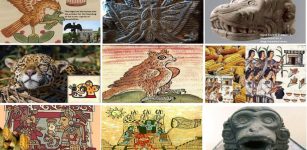 10 Aztec Symbols Explained
Ancient Symbols | Mar 20, 2018
10 Aztec Symbols Explained
Ancient Symbols | Mar 20, 2018 -
 Three Bronze Age Chariots, Shields, Daggers And Decorated Coffins Unearthed In Northern India
Archaeology | Jun 7, 2018
Three Bronze Age Chariots, Shields, Daggers And Decorated Coffins Unearthed In Northern India
Archaeology | Jun 7, 2018 -
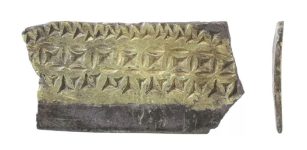 What Is The Roman Silver Fragment Found In Norfolk? Experts Are Baffled
Archaeology | Mar 27, 2023
What Is The Roman Silver Fragment Found In Norfolk? Experts Are Baffled
Archaeology | Mar 27, 2023 -
 Ten Ancient Jugs May Reveal The Location Of The Biblical Tabernacle
Archaeology | Jul 21, 2017
Ten Ancient Jugs May Reveal The Location Of The Biblical Tabernacle
Archaeology | Jul 21, 2017 -
 Long-Lost Anglo-Saxon Monastery Ruled By Queen Cynethryth Of Mercia Discovered By Archaeologists
Archaeology | Aug 19, 2021
Long-Lost Anglo-Saxon Monastery Ruled By Queen Cynethryth Of Mercia Discovered By Archaeologists
Archaeology | Aug 19, 2021 -
 Tuonela – The Land Of The Dead In Beliefs Of Ancient Finnish People
Featured Stories | Nov 9, 2021
Tuonela – The Land Of The Dead In Beliefs Of Ancient Finnish People
Featured Stories | Nov 9, 2021 -
 Mysterious Abaj Takalik Of Guatemala And Intriguing Relationship Between Olmec and Maya
Civilizations | Mar 16, 2020
Mysterious Abaj Takalik Of Guatemala And Intriguing Relationship Between Olmec and Maya
Civilizations | Mar 16, 2020 -
 Neanderthals Vanishing When Homo Sapiens Emerged In Europe Was Coincidental – Are Herbivores The Answer?
Evolution | Sep 29, 2023
Neanderthals Vanishing When Homo Sapiens Emerged In Europe Was Coincidental – Are Herbivores The Answer?
Evolution | Sep 29, 2023 -
 Unique Historical Discovery – Wreck Of Vasa’s Sister Ship Äpplet Found Off Swedish Coast!
Archaeology | Oct 25, 2022
Unique Historical Discovery – Wreck Of Vasa’s Sister Ship Äpplet Found Off Swedish Coast!
Archaeology | Oct 25, 2022 -
 Ancient Bayanihan Tradition Of The Filipino People: Villagers Move Your Entire House Including Walls And Roof
Ancient Traditions And Customs | Sep 6, 2018
Ancient Bayanihan Tradition Of The Filipino People: Villagers Move Your Entire House Including Walls And Roof
Ancient Traditions And Customs | Sep 6, 2018 -
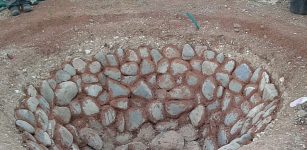 Prastio-Mesorotsos Excavations: Neolithic oven prepared food for 200 guests
News | Aug 30, 2015
Prastio-Mesorotsos Excavations: Neolithic oven prepared food for 200 guests
News | Aug 30, 2015 -
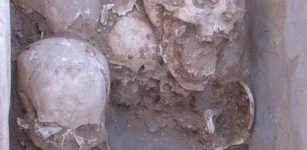 Unusual Burial Ceremony: Bones Of The Dead Were Sorted And Categorized Before Burial
Archaeology | Jan 24, 2016
Unusual Burial Ceremony: Bones Of The Dead Were Sorted And Categorized Before Burial
Archaeology | Jan 24, 2016 -
 On This Day In History: Irish Rebellion Led By The United Irishmen Against British Rule Begins – On May 24, 1798
News | May 24, 2016
On This Day In History: Irish Rebellion Led By The United Irishmen Against British Rule Begins – On May 24, 1798
News | May 24, 2016 -
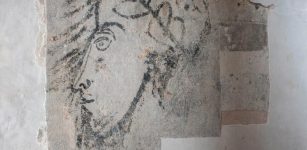 Sir Walter Raleigh ‘Self-Portrait’ Discovered Behind Walls In The Tower Of London
Archaeology | Nov 5, 2018
Sir Walter Raleigh ‘Self-Portrait’ Discovered Behind Walls In The Tower Of London
Archaeology | Nov 5, 2018 -
 Amage: Sarmatian Warrior Queen/Regent Who Impressed With Remarkable Military Skills
Featured Stories | May 23, 2023
Amage: Sarmatian Warrior Queen/Regent Who Impressed With Remarkable Military Skills
Featured Stories | May 23, 2023 -
 10,000-Year-Old DNA Offers Insights Into South African Population History
DNA | Sep 24, 2024
10,000-Year-Old DNA Offers Insights Into South African Population History
DNA | Sep 24, 2024 -
 Constructing Noah’s Ark – Re-Examination Of The Original Biblical Wording
Biblical Mysteries | Feb 1, 2018
Constructing Noah’s Ark – Re-Examination Of The Original Biblical Wording
Biblical Mysteries | Feb 1, 2018 -
 Ancient Seal Offers First Biblical Evidence Of The Prophet Isaiah?
Archaeology | Feb 27, 2018
Ancient Seal Offers First Biblical Evidence Of The Prophet Isaiah?
Archaeology | Feb 27, 2018



